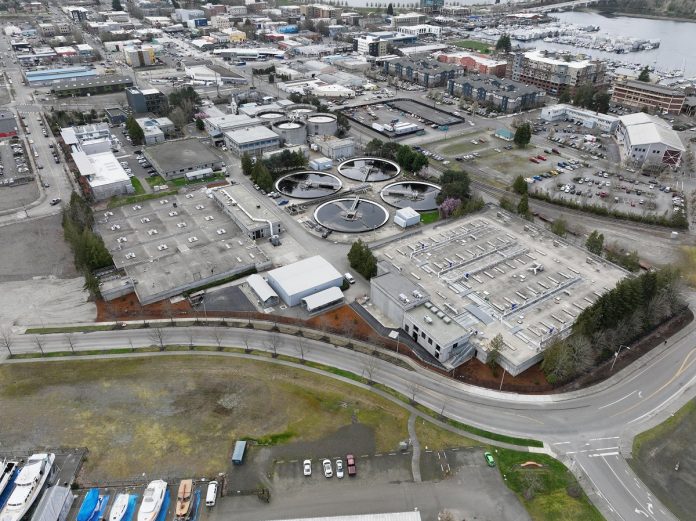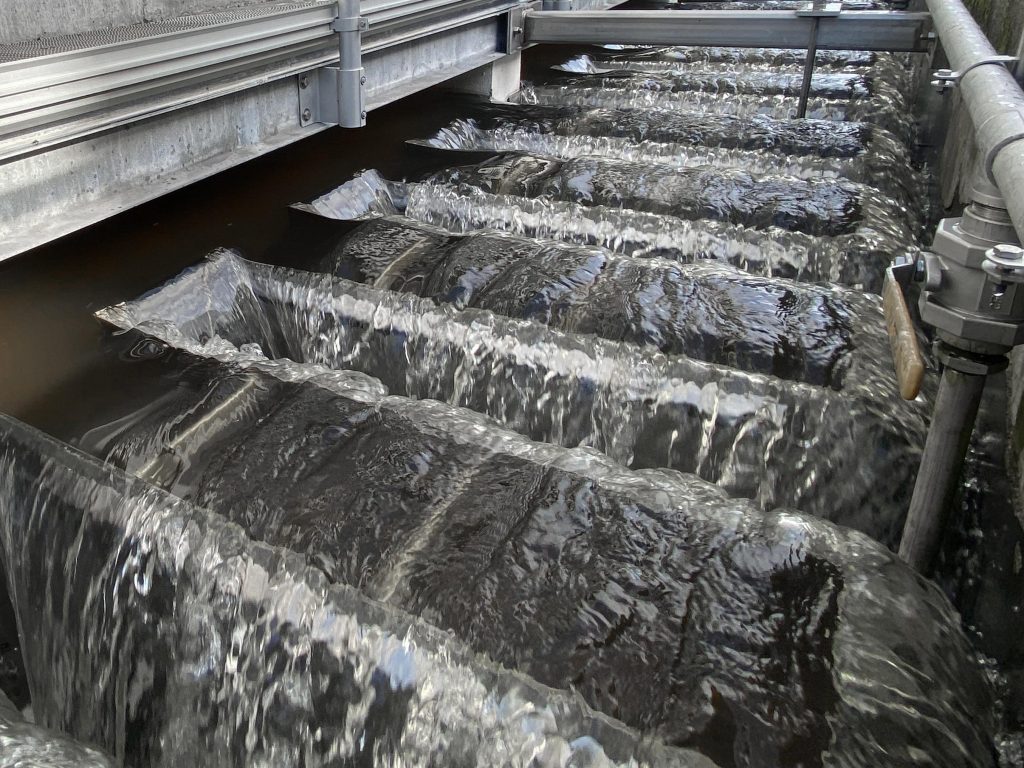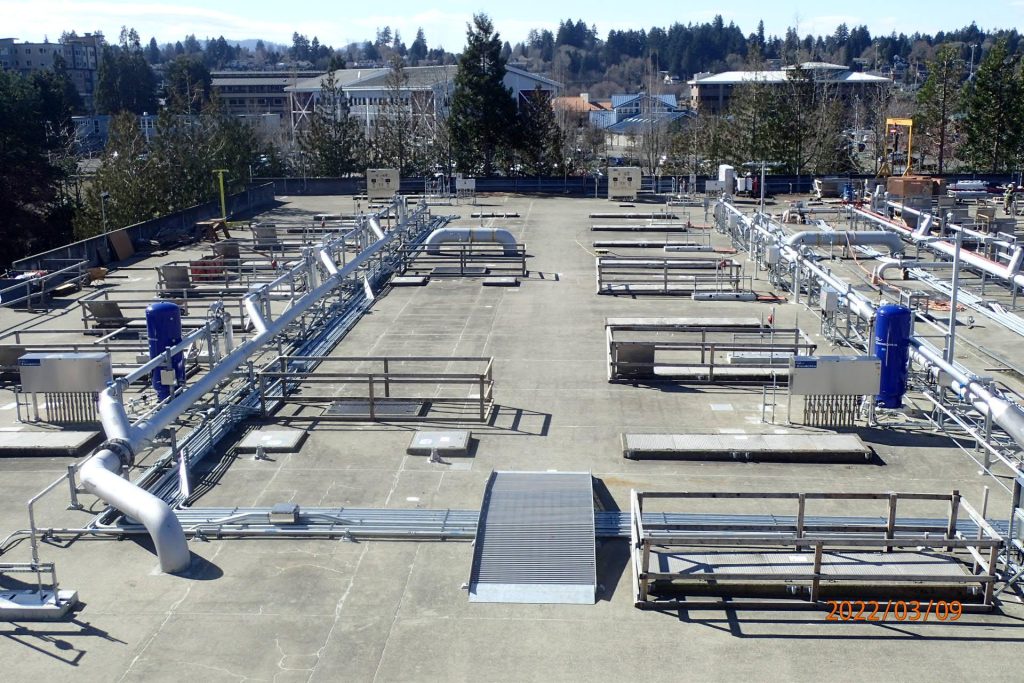
We are fortunate to have fresh, clean water available easily. We don’t think about it much when we turn on the faucet to get water for cooking, a shower or just to drink. And you probably even think less about what happens to the water that goes down the drain. But that water is an important part of our ecosystem. And LOTT Clean Water Alliance at the Budd Inlet Treatment Plant in Olympia works hard to clean wastewater to return it back into our water systems. Recently, LOTT Completed a major upgrade to their Biological Nutrient Removal Process. This process is one of the only ones in the Puget Sound, treating wastewater to a higher standard than nearly all other area treatment plants since 1994.

Lott Clean Water Alliance Update Project
Why is a Biological Nutrient Removal Process important for our area? “Too many nutrients, mainly nitrogen, can be a problem for water quality in Puget Sound,” explains Lisa Dennis-Perez, director of environmental planning and communications. “They result in excessive algal growth because nutrients act like fertilizer for algae and aquatic plants. When these algae and plants die, their decomposition uses up oxygen that fish and other marine life need to survive. This can especially be a problem in narrow inlets like Budd Inlet. LOTT is required to meet stringent discharge permit limits for nutrient reduction by removing nitrogen from the treated water before releasing it to the inlet. This helps protect water quality in Budd Inlet and Puget Sound.”
LOTT has been removing these biological nutrients in our wastewater for over three decades for Lacey, Olympia and Tumwater. It’s right inline with their mission, which is to “to preserve and protect public health and the environment by cleaning and restoring water resources for our communities.”
But 30 years of hard work cleaning water had left its toll on the system. “The original nutrient removal system had equipment in need of replacement,” shares Dennis-Perez. The opportunity allowed for a much-needed update. “New improved technologies created the opportunity for significant energy savings, enhanced process controls, and even better, more reliable nutrient removal.”

So, in 2020, the LOTT Clean Water Alliance started a project to upgrade the nutrient removal process at the Budd Inlet Plant. This was not a small task. Construction cost was $29 million, funded by LOTT’s capital budget and low interested loans through the Department of Ecology Water Quality Program and Department of Commerce Public Works Board.
“This project involved reconfiguring and consolidating the biological treatment process into one area with adjustable controls for zones with and without air, which optimizes conditions for the microorganisms that do the work of removing nutrients,” explains Dennis-Perez. “The project also involved replacing aging equipment, installing customized monitoring instrumentation and improved process controls, building a new mechanical/electrical building and a new electrical substation, and installing a new 66-inche pipeline.”
Started in January 2021, LOTT had to work around their primary function – after all, they couldn’t stop treating wastewater during that time! So, LOTT continued to use the old treatment process while building two of the new treatment trains. “They were commissioned and put into use in March 2022, and then work on the last three treatment trains took place,” shares Dennis-Perez. “This allowed for uninterrupted treatment of wastewater for the duration of the construction project.”
COVID-19 hit during the upgrade, but they were able to shift to remote meetings and onsite crews were able to follow safety protocols to continue working on schedule. The project was completed in March 2023.

The Importance of Biological Nutrient Removal Process
“This second-generation upgrade to the nutrient removal process means that LOTT is a leader in wastewater treatment in the state,” explains Dennis-Perez about the importance of the project. “The Budd Inlet Treatment Plant remains one of the only treatment plants employing biological nutrient removal on Puget Sound. This advanced nitrogen removal technology is likely to be required of other plants in the future, but LOTT already has taken the step to put it in place. LOTT can continue to meet its stringent discharge permit requirements because of this reliable, efficient, effective system. It also means that LOTT is able to meet additional nutrient removal requirements that are expected from the Department of Ecology’s recently completed Budd Inlet Dissolved Oxygen Total Maximum Daily Load Water Quality Improvement Plan and the new Puget Sound Nutrient General Permit affecting 58 wastewater treatment plants along the Sound.”
Next, LOTT is working on improvements to the Digester System, with the first phase already completed June 2023. “The second phase is in design and will involve replacing the digester covers and other system components,” Dennis-Perez says. “It is tentatively scheduled for construction in 2025.”
The public is encouraged to come out to the LOTT Clean Water Alliance, take a tour and see the upgraded system. They have select public tour dates on Saturdays for visitors over 10 years old. The next two dates are August 26 and September 16 at 1 p.m. You must wear closed, toe, heel shoes. Community groups can all 360.664.2333 to schedule a group tour.

















































